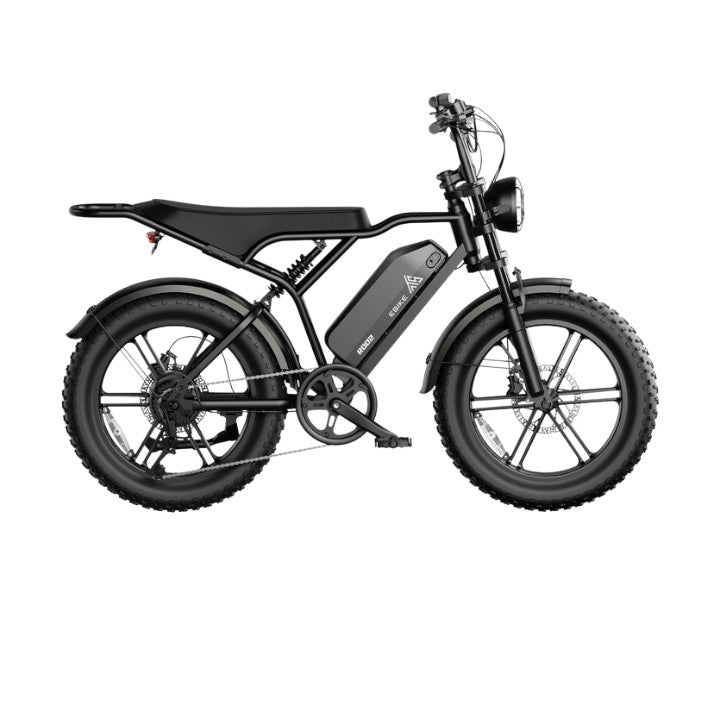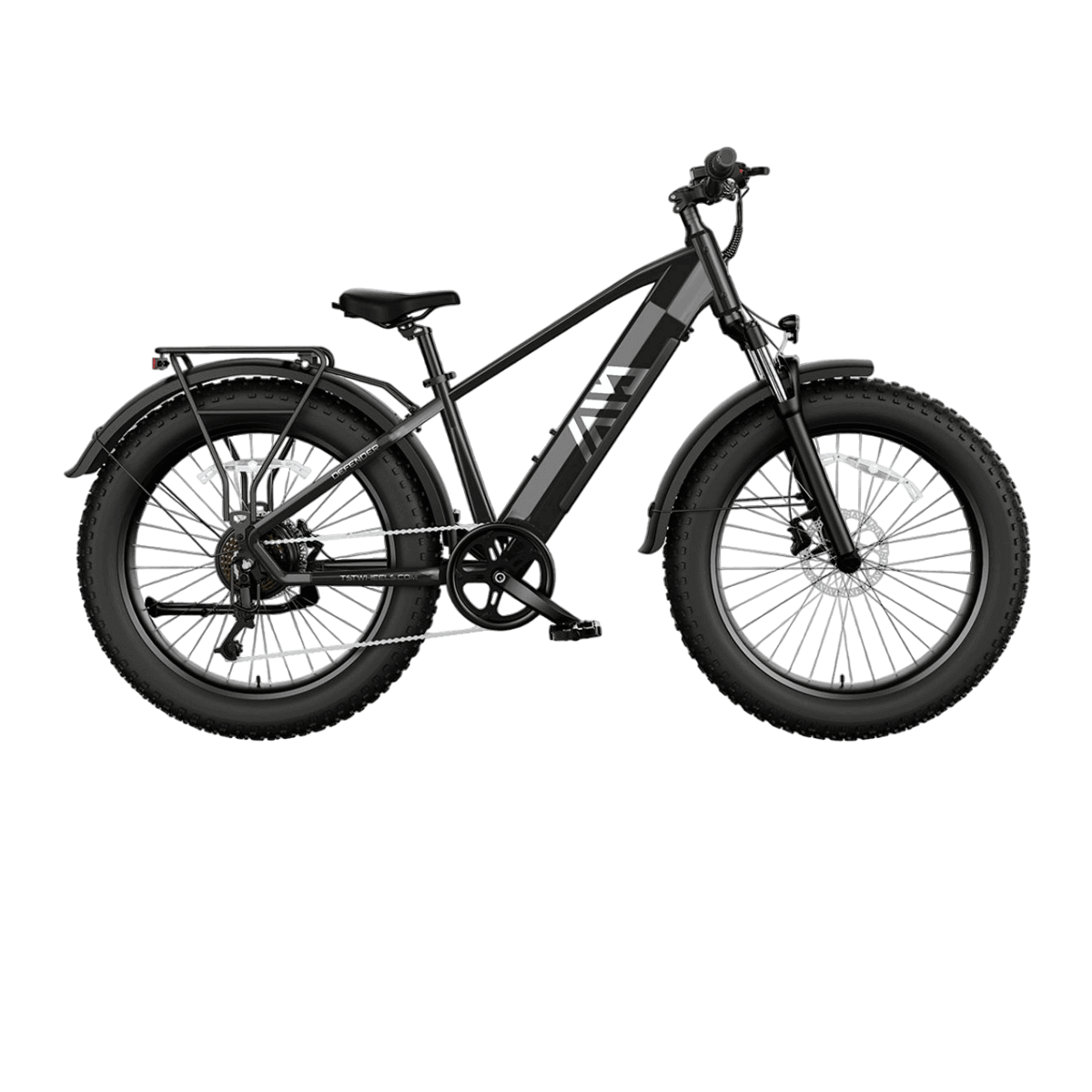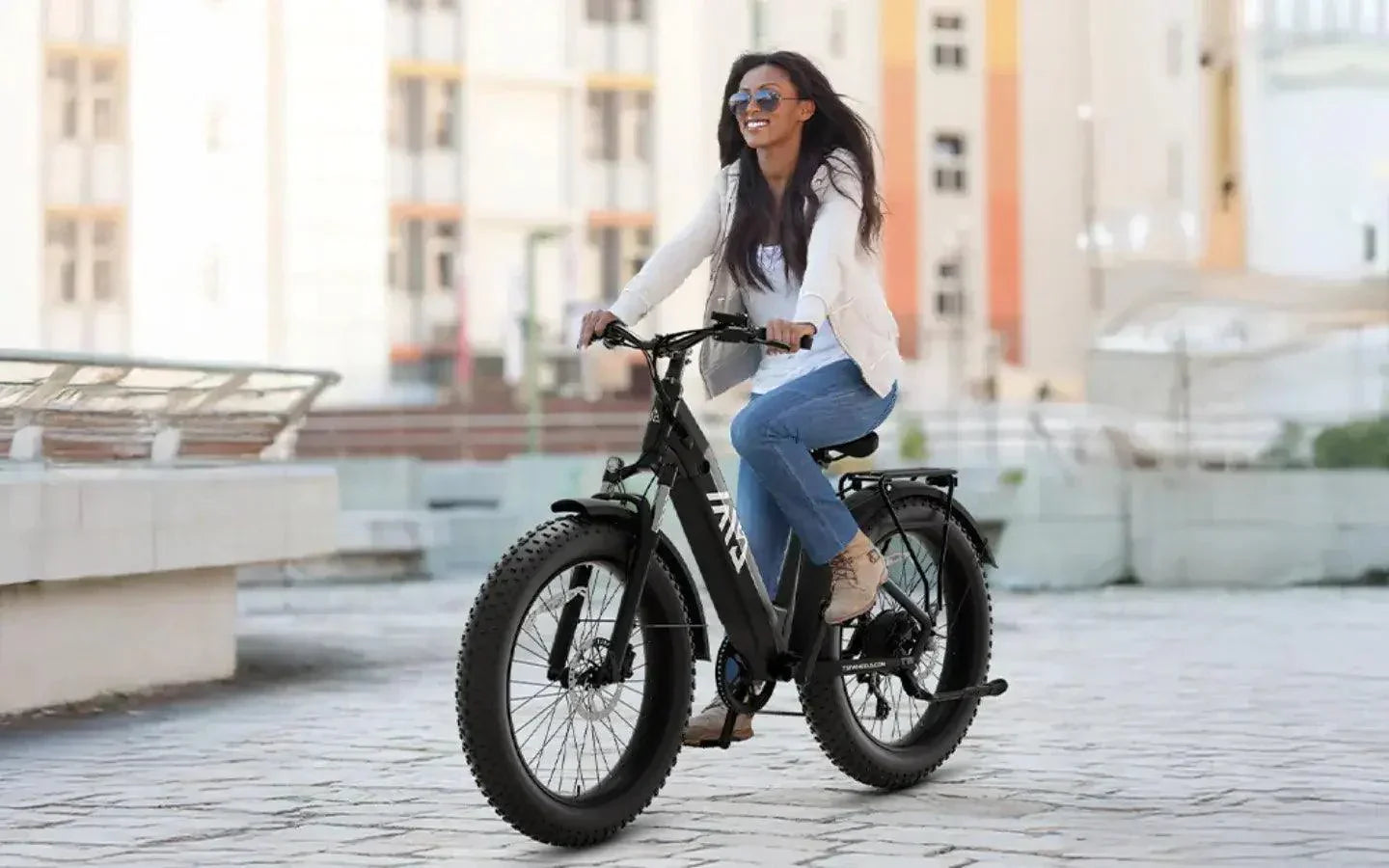Maximizing your ebike range means optimizing battery use, riding style, terrain choice, and maintenance to extend the distance you can travel on a single charge. Using models like TST EBike’s 26-inch and 27-inch, riders can apply practical tips such as adjusting assist levels, maintaining tire pressure, and planning routes to enjoy longer, more efficient rides without range anxiety.
How Does Battery Capacity Affect Ebike Range?
Battery capacity, measured in watt-hours (Wh), is the primary factor determining how far your ebike can travel on one charge. Larger batteries store more energy, enabling longer distances. For example, a 500Wh battery typically offers 40-60 miles under optimal conditions. TST EBike’s 26-inch and 27-inch models come equipped with high-capacity 48V 15-20Ah batteries, providing ample range for commuting and adventure rides.
What Riding Habits Can Help Extend Your Ebike’s Range?
Smooth, steady pedaling and avoiding rapid acceleration or frequent stops conserve battery power. Using lower pedal assist levels on flat terrain and reserving higher levels for hills reduces energy consumption. Maintaining a consistent cadence around 70-75 RPM optimizes motor efficiency. Abrupt braking wastes energy, so anticipating stops and coasting helps preserve battery life.
Riding Habits and Range Impact Chart
| Riding Habit | Effect on Range |
|---|---|
| Smooth pedaling | Increases range |
| Frequent acceleration | Decreases range |
| Using lower assist levels | Extends battery life |
| Consistent cadence | Optimizes motor efficiency |
How Does Terrain Influence Your Ebike’s Range?
Terrain plays a significant role: flat, paved roads require less motor power, maximizing range. Hilly or rough terrains demand more energy, reducing distance per charge. The 26-inch TST EBike model, designed for rough terrains like snow and sand, may consume more battery on challenging trails, while the 27-inch model excels on urban and mixed terrain with better efficiency.
Which Maintenance Practices Improve Battery Performance and Range?
Regular maintenance such as keeping tires inflated to the correct pressure reduces rolling resistance, saving battery power. Cleaning and lubricating the drivetrain ensures smooth pedaling and less motor strain. Inspecting battery connections and terminals for corrosion maintains efficient power transfer. Proper battery storage-cool, dry, and partially charged-preserves battery health and range over time.
What Role Does Assist Level Selection Play in Range Maximization?
Choosing the right pedal assist level balances power and battery use. Eco or low assist modes conserve energy on flat stretches, while medium or high assist is best reserved for climbs or heavy loads. Overusing boost modes drains the battery quickly. TST EBike models offer multiple assist settings, allowing riders to tailor power output to terrain and stamina.
How Can Route Planning Help You Ride Further?
Planning routes with fewer steep climbs and smoother surfaces reduces battery drain. Using apps to identify flatter paths or trails with regenerative braking opportunities can extend range. Avoiding headwinds and riding during favorable weather conditions also conserves battery power. Efficient route planning complements the capabilities of both 26-inch and 27-inch TST EBike models.
Buying Tips
To maximize your ebike range, consider these tips:
- Choose a model with a high-capacity battery: TST EBike’s 26-inch and 27-inch models offer 48V 15-20Ah batteries for extended rides.
- Select tires suited to your terrain: Fat tires for rough terrain (26-inch) or mountain tires for mixed commuting (27-inch).
- Prioritize adjustable pedal assist levels: Allows efficient power use tailored to conditions.
- Maintain your bike regularly: Keep tires inflated, drivetrain clean, and battery connections secure.
- Plan your rides: Use route apps to avoid energy-draining terrain.
- Store your battery properly: In cool, dry places at partial charge to preserve longevity.
Introduction
Maximizing your e-bike's range enhances ride efficiency and extends battery life. Understanding factors like battery capacity, terrain, and riding habits is crucial. Implementing strategic practices can significantly increase the distance you travel on a single charge.
Have you ever set out on an ebike adventure, only to find yourself anxiously watching the battery indicator, wondering if you'll make it back without pedaling unassisted? Understanding and maximizing your ebike's range is crucial for both casual riders and daily commuters. In this guide, we'll explore the factors that influence ebike range and provide actionable tips to help you go the extra mile.
Understanding Ebike Range
E-bike range refers to the distance achievable on a full battery charge. It's influenced by battery capacity (measured in watt-hours), rider weight, terrain, and usage of pedal-assist or throttle. Real-world conditions often yield ranges between 15 to 60 miles per charge.
Ebike range refers to the distance your electric bike can travel on a single battery charge. While manufacturers often provide an estimated range, real-world performance can vary significantly due to several factors.
Key Factors Affecting Ebike Range
Several elements impact e-bike range: battery capacity, rider and cargo weight, terrain, wind resistance, temperature, and riding style. For instance, hilly terrains and heavy loads demand more energy, reducing range.
-
Battery Capacity
Measured in watt-hours (Wh), battery capacity is a primary determinant of range. A higher Wh rating typically indicates a longer potential range. For instance, a 500Wh battery may offer a range of 40-60 miles under optimal conditions.
-
Motor Efficiency
The efficiency of your ebike's motor affects how effectively battery power is converted into movement. Mid-drive motors, positioned near the bike's bottom bracket, often provide better efficiency and weight distribution compared to hub motors.
-
Terrain and Riding Conditions
Flat, paved surfaces allow for maximum range, while hilly or rough terrains demand more power, reducing the distance you can travel. For example, riding on steep inclines consumes more energy than cruising on level ground.
-
Rider Weight and Cargo
The combined weight of the rider and any additional cargo influences energy consumption. Heavier loads require more power, thereby decreasing range. Minimizing carried weight can help extend your ebike's distance capabilities.
-
Riding Style
Aggressive acceleration and frequent use of maximum assist levels drain the battery faster. Maintaining a steady pace and utilizing lower assist settings when possible can conserve energy.
-
Weather Conditions
Extreme temperatures, particularly cold weather, can reduce battery performance. Lithium-ion batteries operate optimally in moderate climates, so it's advisable to ride in favorable weather when aiming for longer distances.
Real-World Range Scenarios
In practice, e-bike range varies. A rider using pedal-assist in hilly areas might achieve 25 miles, while another on flat terrain could reach 50 miles. Factors like speed, assist level, and load significantly influence these outcomes.
To illustrate how these factors interplay, consider the following scenarios:
-
Urban Commuting: A rider with a 500Wh battery on flat city roads using eco mode might achieve 40-60 miles.
-
Trail Riding: Navigating gravel paths with moderate hills could reduce the range to 25-40 miles, depending on assist levels.
-
Mountain Adventures: Tackling steep inclines with a 1000Wh battery in turbo mode may limit the range to 15-25 miles.
Tips to Maximize Your Ebike's Range
To extend your e-bike's range: maintain proper tire pressure, use lower assist levels, minimize weight, and ride at steady speeds. Additionally, planning routes with fewer stops and flatter terrains can conserve battery life.
-
Optimize Assist Levels
Use lower assist settings on flat terrains and reserve higher levels for challenging inclines. This strategy balances power usage and physical effort.
-
Maintain Proper Tire Pressure
Under-inflated tires increase rolling resistance, requiring more energy. Regularly check and maintain tire pressure within the recommended range to enhance efficiency.
-
Plan Efficient Routes
Choose paths with fewer hills and smoother surfaces when possible. Utilizing bike lanes and avoiding stop-and-go traffic can also conserve battery life.
-
Regular Battery Maintenance
Keep your battery charged and store it in moderate temperatures. Avoid letting it discharge completely before recharging to prolong its lifespan.
-
Lighten Your Load
Carry only essential items to reduce the total weight. Consider investing in lightweight accessories and components to further decrease the burden.
-
Smooth Riding Technique
Gradual acceleration and anticipating stops can prevent unnecessary energy expenditure. Aim for a consistent, moderate speed during your rides.
Selecting the Right Ebike for Your Range Needs
Choose an e-bike that aligns with your typical riding distance and terrain. Consider models with higher battery capacities for longer commutes or hilly areas. Assess motor efficiency, battery size, and overall bike weight to ensure it meets your range requirements.
When choosing an ebike, align its specifications with your intended use:
-
Short City Rides: A 500Wh battery with a lightweight frame is suitable for daily commutes.
-
Long-Distance Touring: Opt for a 750Wh or higher battery paired with an efficient motor to cover extended distances.
-
Off-Road Adventures: Consider models with robust batteries and durable components designed for varied terrains.
Conclusion
Understanding the factors that influence your ebike's range empowers you to make informed decisions and enjoy longer, more efficient rides. By adopting mindful riding habits, maintaining your equipment, and planning strategically, you can significantly extend the distance your ebike can cover on a single charge.
FAQs
-
How can I extend my ebike's range?
Utilize lower assist levels, maintain proper tire pressure, ride steadily, reduce carried weight, and ensure regular battery maintenance.
-
Does rider weight affect ebike range?
Yes, heavier riders or additional cargo require more energy, reducing the overall range.
-
How does cold weather impact my ebike's battery?
Cold temperatures can decrease battery efficiency, leading to a shorter range. Keeping the battery warm and storing it indoors can help mitigate this effect.








Leave a comment
All comments are moderated before being published.
This site is protected by hCaptcha and the hCaptcha Privacy Policy and Terms of Service apply.